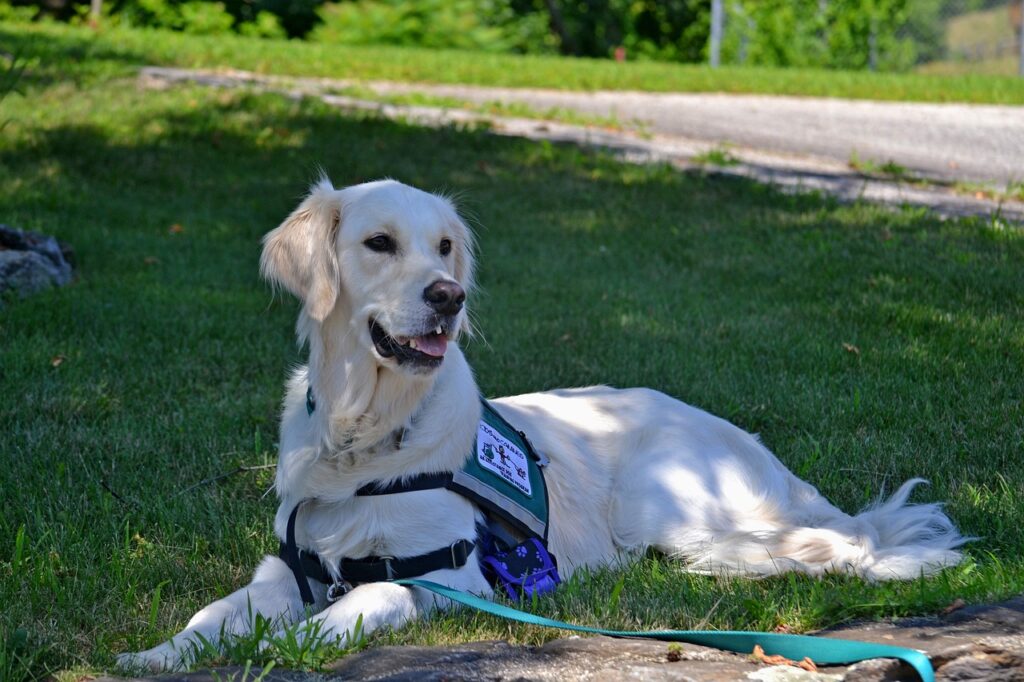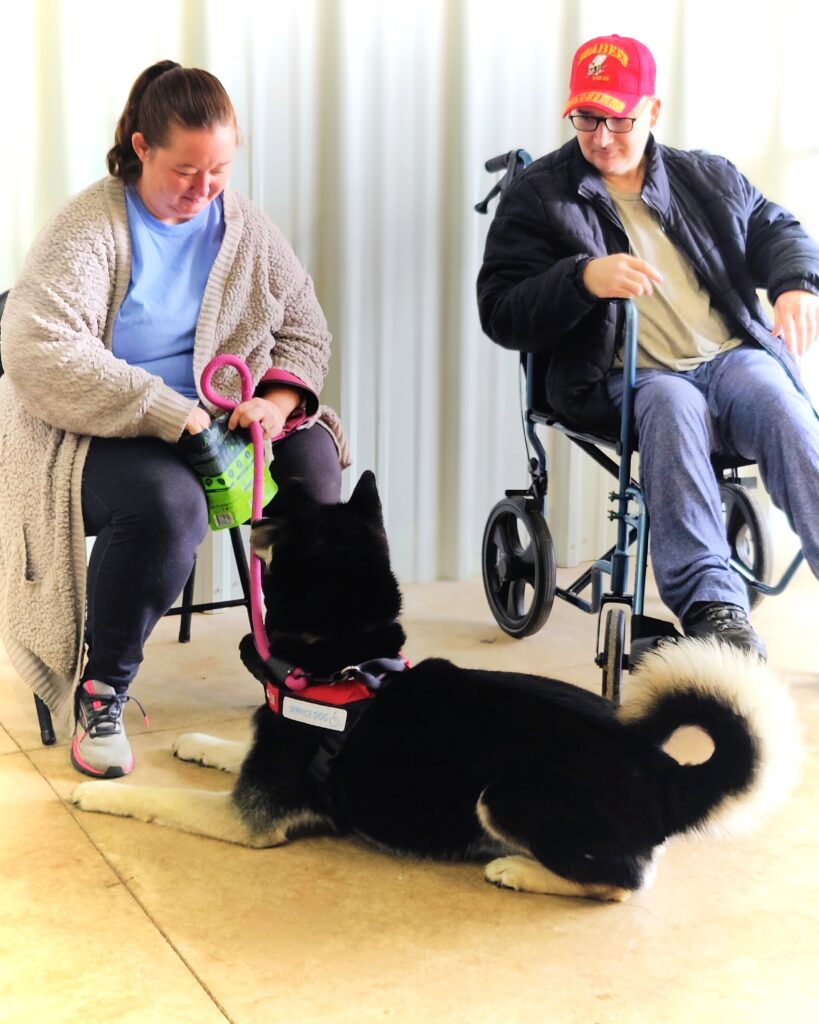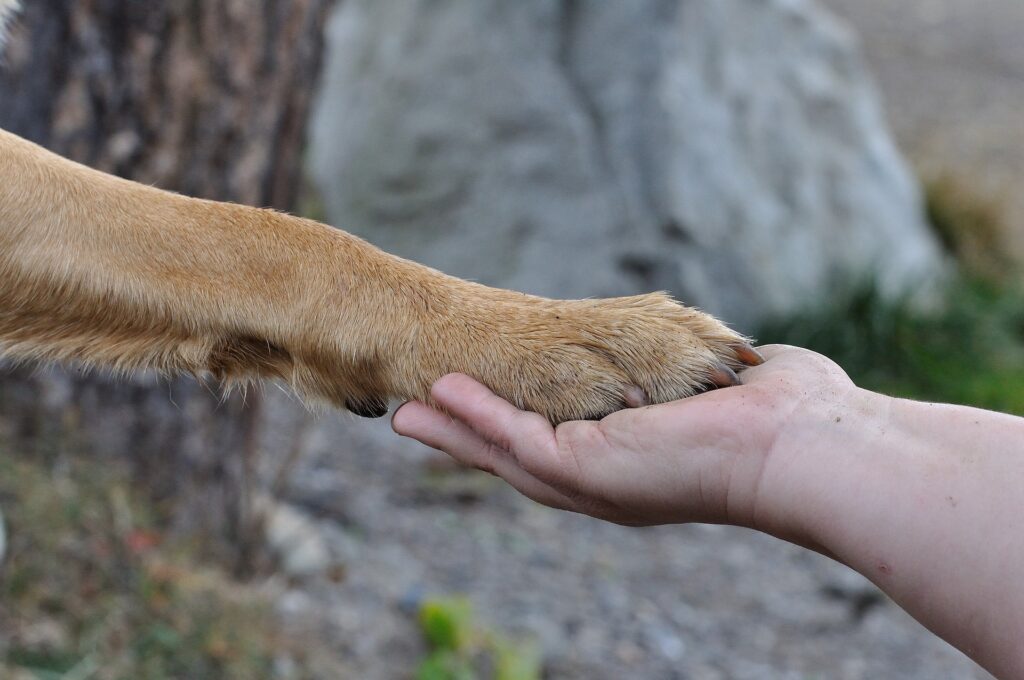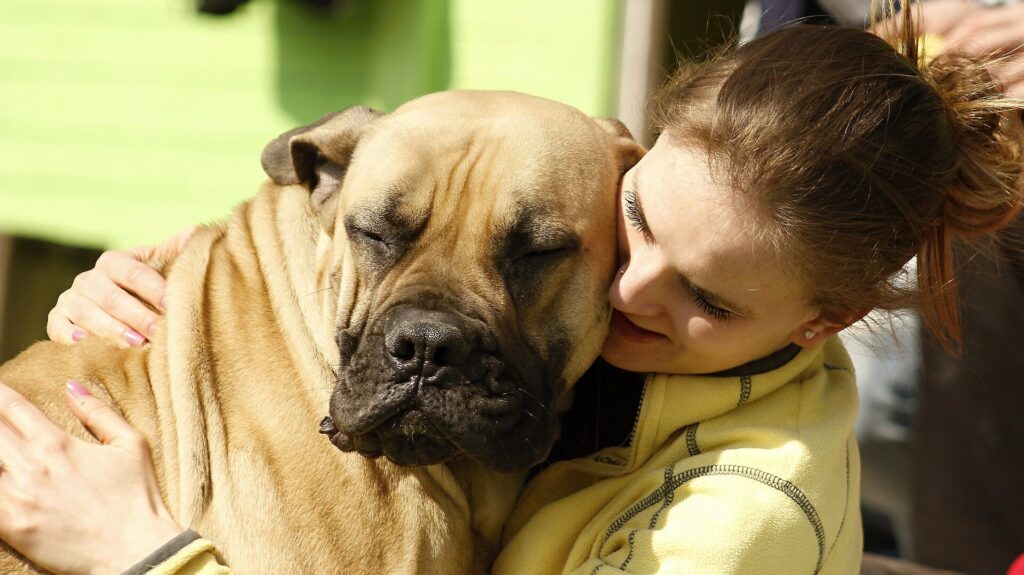
Do you know the difference between an emotional support animal, therapy dog, and service dog? If not, you’re in good company. These job titles sound similar, but they have some big differences.
If you’re wondering what those differences are and if one of these dogs might be right for you, you’ve come to the right place. We’re going to define these dog job titles, discuss how these dogs get their jobs, and go over where they are allowed to do their job.

Service Dogs:
Service dogs serve one person and are trained to do tasks to assist that person. While these dogs can be co-handled in situations such as a dog serving a child and parent together, these dogs have a primary handler to do their jobs.
Some service dog tasks include:
- Mobility assistance
- Medical alert
- Guiding
- Hearing alert
- Deep pressure therapy
- Self-harm interruption
Service dogs are prescribed by a doctor and they replace a human helper in some way. These dogs are usually selected from a young age and start training early. Their training can last anywhere from two to three years depending on the needs of the patient and the mental maturity of the dog.
Fully trained service dogs have public access. This means that they are allowed to go places where pet dogs are not allowed. Public access training, paired with task training, and the right temperament for the work are all part of a service dog training program.
While these dogs are amazing, they may not be the best solution for a particular person’s needs. When deciding if a service dog is right for someone, it’s important to look at many factors. Handlers of service dogs have to learn how to work with their dogs, and learn their signals and cues in order to get the most out of their service animal.
For those who have had the ability to work with a service dog, the results are life-changing. Service dogs help people with disabilities gain more independence in their everyday lives and are essential to so many people.

Emotional Support Animal (ESA)
Just like service dogs, emotional support animals have a specific person they serve in their home. They provide comfort to people with varying conditions such as anxiety, depression, and behavior disorders. These companions make a huge difference in their humans’ lives and improve quality of life. For some people, having an ESA provides a needed routine, emotional connection, and relief from loneliness.
ESAs do not require any specific training. They are protected under the Fair Housing Act, which allows them to live with their humans even if there is a no-pet policy in place. However, housing providers are not required to provide reasonable accommodation if the animal is destructive, disruptive, or dangerous. Tenants are also responsible for any damages done in regards to their ESA.
People who wish to have an ESA must get a letter from a licensed healthcare professional and present this letter as documentation to their landlord. ESAs are not limited to a certain animal. So while dogs are a popular choice, some people have ESAs that are cats, reptiles, or birds.
A common misconception about ESAs is where they are allowed outside of the home. ESAs do not have public access. This means that they can not go to places like a grocery store, restaurant, and non-pet friendly businesses.
And while no specific training is required of an ESA, many people train their ESAs for basic manners, enrichment, and bonding. Training can also help prevent disruptive or destructive behaviors that would excuse an ESA from the home.
Since ESAs can go to pet-friendly places, many people enjoy taking their ESAs with them. These amazing animals can help provide comfort to their people without public access and are a great option for those who may not need a fully task trained service dog.

Therapy Dogs
Therapy dogs work with a handler to provide comfort to others. The dog and handler are often referred to as a team. They are commonly seen in nursing homes, hospitals, libraries, and even in airports.
Teams go through extensive training and temperament testing to be able to do their job. Therapy dogs need to handle different types of environments and people, as well as surprising situations. Above all, therapy dogs must be interested in the work and have a love of people.
To become a therapy dog, teams must go through a certification program with a therapy dog organization. There are many different options for therapy dog organizations and while testing for certification looks roughly the same, many organizations have their own testing. Some organizations, like Therapy Dog International, require the team not to be a part of any other therapy dog organizations. Many organizations require dues to be paid by their handlers and these dues help with running the organization and outreach in the community.
Teams volunteer their time in their community where they are invited and do not have public access. Some organizations coordinate with certain facilities. Other facilities welcome teams to apply to visit them.
Some common therapy dog programs include:
- Children reading to dogs
- Visiting people in nursing homes and hospitals
- Airport programs to help travelers de-stress
- Helping people after traumatic events such as natural disasters, violent incidents, or fatal accidents
- Comforting domestic violence survivors
- Visiting schools, including universities on finals week
- Helping comfort witnesses in court
- Providing comfort in group therapy sessions and rehabilitation centers
Some therapy dog teams do it all, while others find their niche area. Some dogs thrive in certain environments more than others. When looking at the team, the human end of the leash matters just as much. Handlers guide interactions between their dogs and the people they serve. Handlers being able to show compassion, empathy, and respect for those they serve is just as important as their dog providing comfort.
We hope we have cleared up some of the confusion around these similar dog job titles. If you may benefit from having one of these dogs, we are more than happy to help with the training process.
We can help you evaluate your dog to see if they are a good candidate for therapy or service dog work. If you don’t have a dog picked out yet, we can assist you with that process as well. We can even help you train your ESA dog for basic manners and beyond.
Message us for your free consultation and to learn more about how we can help you with your training goals.







